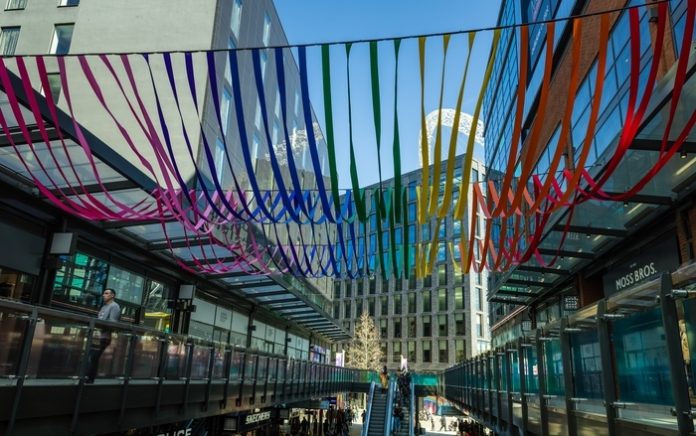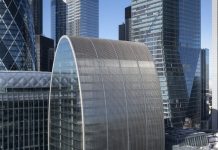As Daniel Craig has his last hurrah as James Bond, the arrival of the Hollywood blockbuster has made its own explosive impact on retail and leisure destinations like London Designer Outlet, which saw a boom in total sales in the first week No Time To Die has been in cinemas.
In the first full week the Bond film has been in cinemas, the capital’s leading premium fashion and lifestyle outlet centre, which has a nine-screen Cineworld, saw total sales up +6.3% and footfall up +6% compared to the week before. The increase, which has in part been driven by movie-lovers’ return to the irreplaceable cinematic experience, follows a steady growth in the proportion of London Designer Outlet’s total sales from its cafés, bars, restaurants and leisure operators, which now account for 27% of sales across the urban outlet centre.
Set in Wembley Park, the globally famous entertainment district and 365-day neighbourhood, London Designer Outlet is one of only a small number of outlet centres in Europe that blend retail, F&B, leisure and events in an easy-to-reach urban setting.
Sue Shepherd, General Manager for London Designer Outlet, said: “Bond is back and the impact has been felt by our premium fashion, retail and F&B brands. Far from being shaken (or stirred), the return of blockbuster movies is a continuation of what we’ve seen for some months: The importance of leisure and dining to the retail experience. While many of our guests returned to London Designer Outlet following lockdowns because they missed the joy of physical shopping, many others have returned to enjoy a day out with friends and family, maybe doing a bit of shopping but otherwise enjoying the cafés, bars and restaurants we offer. As we emerge from the pandemic, during which we welcomed Byron Burgers and opened the doors to a newly upsized wagamama, we will continue to invest in our leisure offer, to reinforce our position as the capital’s leading premium fashion and lifestyle outlet centre.”
London Designer Outlet (LDO) has also seen its improved premium fashion and retail offer continue to pay off. The centre’s brands have experienced a sales increase in like-for-like categories including menswear +68% and homewares +10.2% compared to 2019. The news follows that of the decision by globally famous fashion brand Tommy Hilfiger to treble in size at LDO to a 7,800 sq ft store, following consistently impressive sales.
Furthermore, Calvin Klein has also now committed to upsize by 50% to a 4,100 sq ft permanent store following the trial store which opened in August 2020, between lockdowns and will form one of the brand’s largest UK’s outlet stores. Both Tommy Hilfiger and Calvin Klein represent the next steps in a strategic improvement to London Designer Outlet’s premium fashion offering and reflect how well these names are performing with the centre’s affluent catchment from across London and the Home Counties.
Retail and leisure destinations like London Designer Outlet, which is managed by the UK’s specialist outlet operator Realm, have consistently outperformed wider physical retail throughout the pandemic, attracting guests with their compelling mixture of high quality at low prices, an open-air design, and a mix of designer and high street fashion as well as places to eat and drink.
London Designer Outlet has further reported a growth in the proportion of centre-wide total sales that its restaurants, bars and cafés make up, now standing at 27%. F&B sales in September 2021 increased +6% compared to September 2019, before the pandemic.
Part of the retail and leisure mix within Wembley Park, the multi-billion pound neighbourhood transformed by developer Quintain, London Designer Outlet became the first outlet centre to open in the UK capital in 2013, experience 22 consecutive quarters of year-on-year growth by September 2019, and is benefitting from a number of advantages that put it in an excellent position to benefit from the post-pandemic retail landscape. As an urban outlet centre in Wembley Park, it benefits from approximately 9 million people living in its catchment area, as well as thousands of people living within Wembley Park itself, transport links that can see visitors reach Marylebone within nine minutes, Baker Street within 12, and King’s Cross within 19.




















